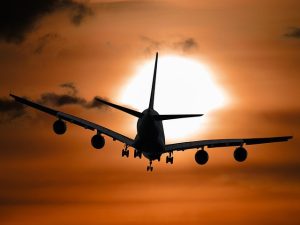
Ever wonder how long airplanes stay in service? While advancements in modern aviation have extended their lifespans, airplanes don’t last forever. They will eventually reach a point at which they must be retired.
How Airplane Lifespans Are Measured
The lifespan of an airplane can be measured in flight hours or pressurization cycles. Single-aisle airliners like the Boeing 737 and Airbus A320 have a lifespan of roughly 60,000 flight hours or 20,000 pressurization cycles — whichever comes first. Wide-body airliners like the Boeing 777 and Airbus A350, on the other have a longer lifespan of 100,000 or more flight hours and up to 30,000 pressurization cycles.
Flight hours represent the time an airplane spends in the air, whereas pressurization cycles represent the pressurization and depressurization of an airplane’s cabin. Using these metrics, engineers and airlines can measure an airplane’s lifespan.
Why Flight Hours Affect an Airplane’s Lifespan
Flight hours affect an airplane’s lifespan because it indicates environmental exposure. When flying, airplanes are exposed to harsh environmental conditions, including ultraviolet (UV) light, extreme temperatures, wind, salt (when flying near the coast) and humidity. Over time, exposure to these environmental conditions can shorten an airplane’s lifespan.
Why Pressurization Cycles Affect an Airplane’s Lifespan
Pressurization cycles affect an airplane’s lifespan because it indicates stress. A typical commercial airliner is pressurized to about the equivalent of 6,000 to 8,000 feet, which translates into 10 to 11 pounds per square inch (PSI). The constant pressurization and depressurization of an airplane’s cabin will subject its fuselage and body to stress, which can shorten its usable life.
What Happens When an Airplane Reaches the End of Its Lifespan?
When an airplane reaches the end of its lifespan, one of several things may occur. Depending on its type and condition, it may be converted for cargo use. Commercial airliners, for instance, are often gutted and repurposed so that they can carry cargo rather than passengers. Others become training tools for aviation schools.
If an airplane can’t be repurposed, it will typically be scrapped for recycling. Airplanes contain a lot of materials, many of which can be recycled. Rather than allowing these materials to go to waste, airlines and companies will recycle them.
In Conclusion
All airplanes have a finite life. Years of flight hours and countless pressurization cycles eventually take their toll on even the most durable airplanes. Some may find a second life hauling cargo or training the next generation of pilots, while others are dismantled so their parts and materials can be reused.



